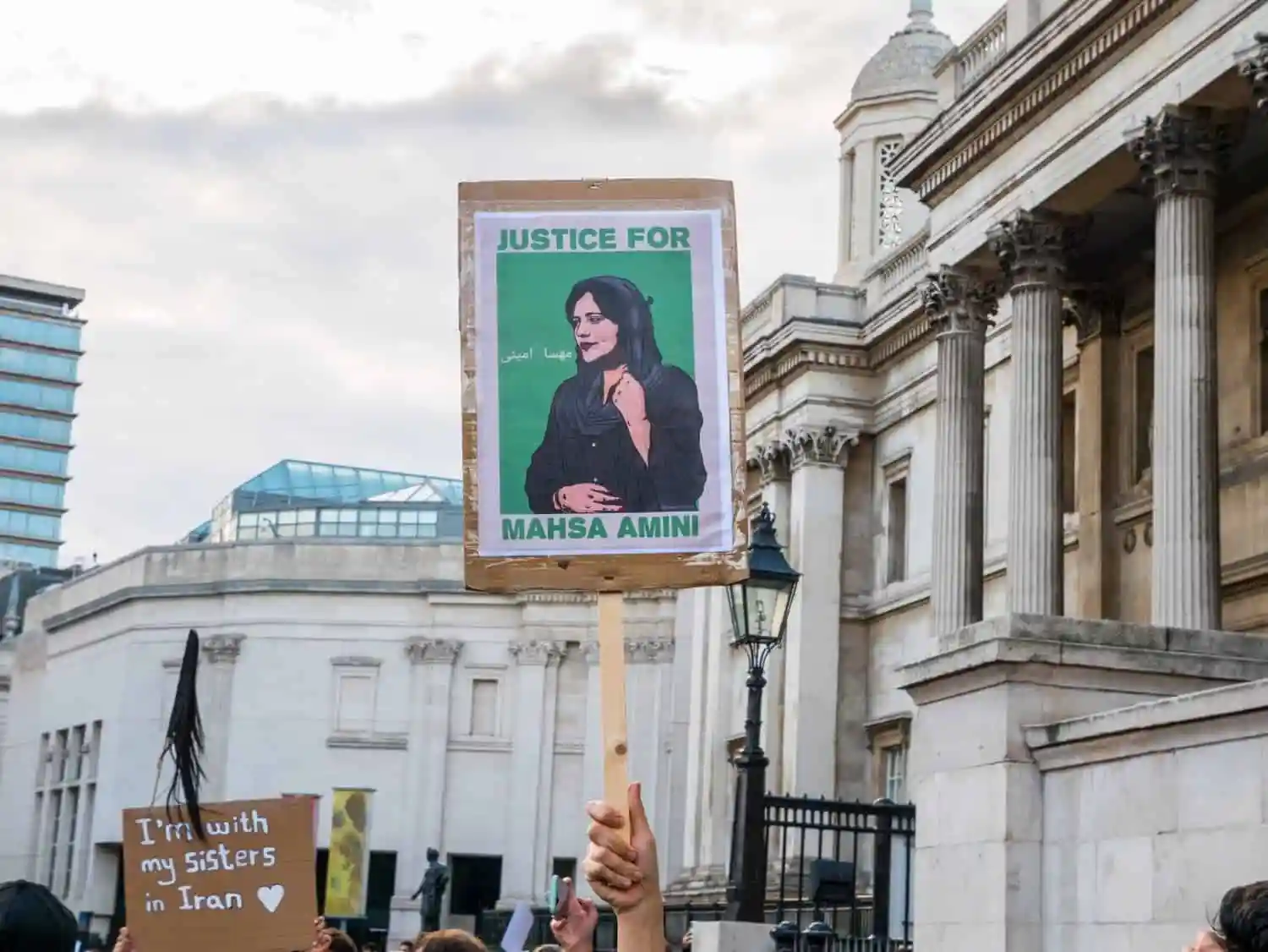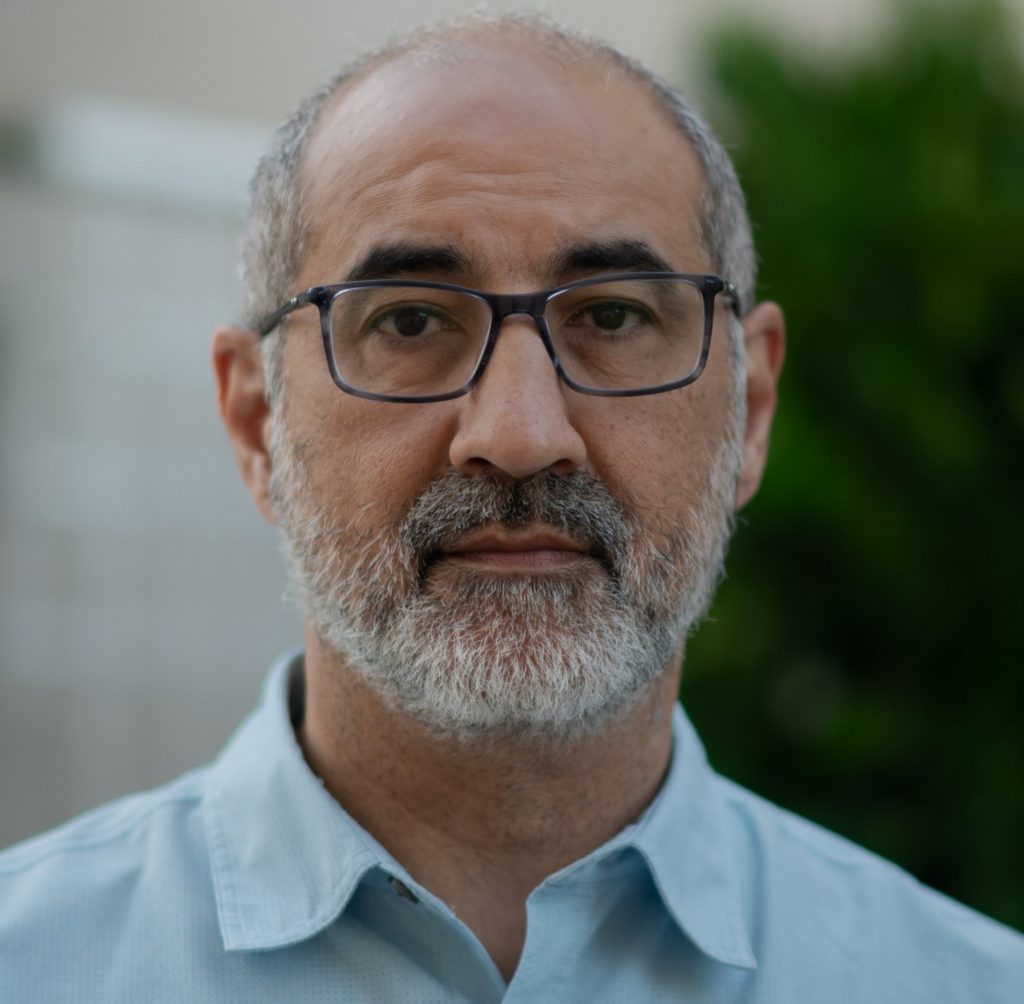The Women’s Movement in Iran One Year after the Death of Mahsa Amini
Originally published on September 12, 2023 by Public Seminar
By Kian Tajbakhsh
Iran continues to surprise the world. In 1979, Western observers—and many Iranians—were astonished to see a people rise up, in the words of one wag, to demand less freedom and fewer material things. Ayatollah Ruhollah Khomeini and his Islamist followers obligingly gave them both.
Almost 45 years later, I stand astonished again. If someone had told me 18 months ago that Iranian women would be walking more or less freely in the streets of Iranian cities without hair coverings or hijab, I simply wouldn’t have believed them.
And if someone had told me 18 months ago that the Iranian government would be a belligerent in a European ground war for the first time in Iran’s history—supplying weapons to Russia, entering into a close strategic cooperation with the Russian military, and bolstering its own military capabilities in the process, I would have thought they were joking.

Both of these things have happened. But a nation’s evolution rarely follows a single trajectory, but rather consists of often contradictory strands of change. As a result, it is hard to predict how Iran will next surprise us. As we approach the anniversary of Mahsa Amini’s death in September 2022, an event which sparked the Women, Life, Freedom movement and several months of nationwide anti-hijab and anti-regime protests, what can we expect for the future of Iranian women’s civil rights? What is the trajectory of the people’s struggle for a more “normal” modernity, for a freer, richer life?
For those dreaming of a more liberal future for Iran, there are both reasons for optimism and reasons for worry.
So far, at least, against all odds (and at a high price of many killed and thousands arrested) the anti-hijab protesters appear to have won the immediate battle and have forced the government to retreat from the strict enforcement of the mandatory hijab laws. This fragile triumph has been a long time coming; indeed, the protests and their aftermath should be viewed as the latest phase of the long-standing women’s movement for greater civil rights, reaching back several decades to even before the 1979 revolution.
Of course, the Women, Life, Freedom movement has not (yet) won the war; their victory is existential and social but not yet judicial and political—since women still don’t have the legal right to refuse to wear the hijab in public, and broader gender equity has not been achieved.
But strong indications from inside Iran suggest that the regime realizes it cannot put this genie back into the bottle. It’s true that the regime has started to increase the number of fines for violations of the hijab laws; it has begun impounding cars of women drivers caught on surveillance cameras without the hijab and threatening to revoke driver’s licenses.
But this relatively mild enforcement constitutes a retreat from its past position of physically, even violently accosting such women in the street and dragging them screaming and kicking (literally) into a police van. A Persian trait of tacit tolerance, or turning a blind eye (ghamz-e ayn) is evident in the many YouTube videos of the streets of Tehran in which very few people, not even traditional shopkeepers, seem to care if women now appear with their hair uncovered.
Even if the anti-regime movement associated with the protests still lacks a structured organization or leadership, it is a social movement driven by women inside Iran, and supported by important activism both inside and outside the country. (The churlish controversy in the diaspora over Western representations of the movement that perhaps over-emphasized the role of US–based activists does not diminish the fact of this outside support.)
The movement’s success, limited though it has so far been, has exposed the failure of the regime to impose, let alone indoctrinate, an extreme Islamist social and religious norm on a recalcitrant population. The brave young protesters have moved the needle within society and against the state. Arguably they did so more effectively than any political reform movements preceding it. But even this modestly positive story has a troubling twist.
First, the mandatory hijab may not be as indispensable to the regime’s identity as many believed. Earlier on in the protests, many pundits claimed that the hijab was a “pillar” of the Islamic Republic of Iran (IRI), meaning that the regime couldn’t concede on its hijab policy without collapsing. However, this is clearly not the case.
In Fall 2022 I wrote about the likelihood that the regime would find some kind of face-saving partial compromise that would involve keeping the law but reducing enforcement and associated punishments. The hijab is more significant, given the regime’s ideological foundations, but the Islamic Republic has long tolerated other illegal behaviors, like the use of private satellite TV dishes, DVD players, short-sleeved shirts for men, and, in the last year, short trousers, something unseen in public spaces since the revolution. This partial compromise at least provides women some freedom and safety.
Of course, given the ideological and even fanatical nature of the regime, one cannot rule out a draconian reintroduction of the hijab rules at some point in the future; Iran remains only one of two Islamic countries in the world whose government insists on mandatory public hijab. However, unlike Afghanistan’s Taliban, the Iranian regime is facing robust resistance to the imposed hijab rules.
Yet so far the Islamic Republic of Iran is still able to bend when its survival is at stake. Indeed, Khomeini once declared that the “preservation of the Islamic state is more important [owjeb-e vajebat] than even some religious obligations such as praying or going on the hajj.” It’s a statement many Iranians cite in casual conversation. It represents a commitment to suspend Islamic practices temporarily if faced with an existential threat. Khomeini seemed to be quite consistent within his understanding of the Islamic state as defined by the doctrine of velayat-faqih (guardianship of the religious jurist), which boils down to the monopoly control of the state and political power by the clergy and their followers: in other words, an Islamic dictatorship. What stamps the regime as Islamic is who is in charge and not necessarily the policies or laws. This suggests there may be little hope for the broader ambitions of the Women, Life, Freedom movement for some form of substantive political liberalization, let alone regime change.
Indeed, by not enforcing the law strictly but keeping it on the books, the regime may well be dangling a sword of Damocles over women’s heads.
The regime is currently going through the parliamentary niceties of developing a vastly expanded “chastity and hijab law” that would employ widespread surveillance technology to identify and then punish women who violate the hijab rules. Much like China’s so-called social credit system, it represents a kind of Islamic gender apartheid version of George Orwell’s totalitarian dystopias.
If passed and enforced, the law would indicate that the regime’s current moderation was tactical: it was simply buying time to ramp up its capacity to impose an even greater totalitarian control over every woman in the country—and, by extension, men. That is to say, everyone.
The regime’s newfound expanded geopolitical influence and power projection makes its expanded power over its citizenry all the more concerning. The Islamic Republic may be on its back foot on the domestic cultural front, but it has massively expanded its geopolitical influence and standing. Iran’s government has drawn closer to China and Russia, two powerful partners who also are antagonistic to the West, reject much of the best of modernity, and buy Iran’s oil—all of which will probably backstop the regime’s survival for decades to come. There is currently little Iranian society can do about this; citizens are not really permitted to engage in foreign policy debates.
Still, the Women, Life, Freedom movement has demonstrated that the state can be pushed back through massive civil disobedience (and sadly at a high price in human life and freedom). The women’s movement (with widespread male support) has scored one of the most significant wins for open society over the Islamist state in over four decades of the IRI’s existence.
If the practical, albeit fragile, achievements of the women’s uprising can be maintained and even expanded into legal recognition—unfortunately a big “if”—the more liberal-minded groups within society will be stronger than they were a few years ago.
Perhaps one lesson we can learn from these events is to fight the battles where you can and hold on to whatever victories you achieve. Another is that social change is a zig-zagging affair: three steps forward, two steps back. Many rightly wish we could celebrate more definitive gains one year after Mahsa’s death. But it is a fitting tribute to all those who have suffered to celebrate even this fragile triumph.

Kian Tajbakhsh is a Consortium Scholar, Academic Fellow at Columbia University’s Committee on Global Thought, and Senior Advisor at Columbia Global Centers, where he coordinates the Committee on Forced Migration. His book, “Creating Local Democracy In Iran: State-Building and Politics of Decentralization,” was published by Cambridge University Press in 2022.


